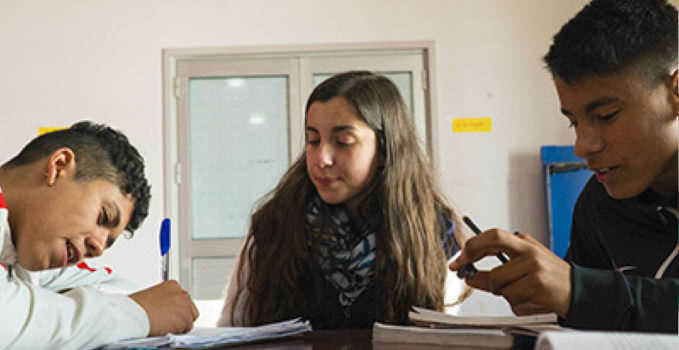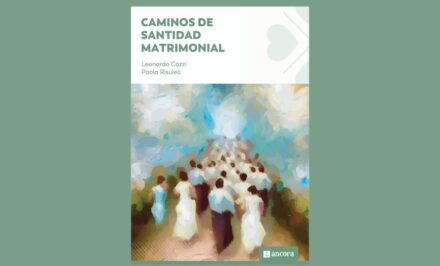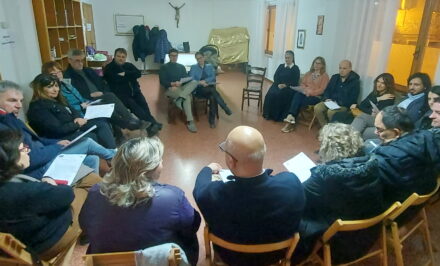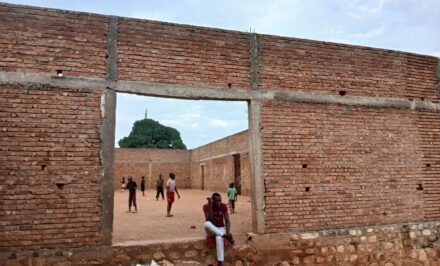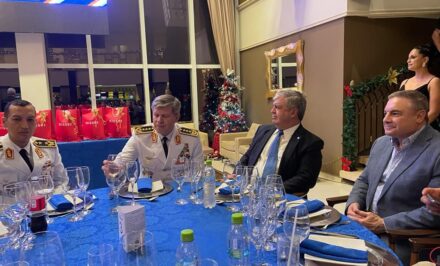URUGUAY, Juan Andrés Nopitsch •
Providencia Educational Center, in Montevideo, Uruguay, participated in the first Congress regarding experiences of accompaniment for Uruguay’s public and private high schools’ educational paths; the Council of Secondary Education organized it. —
The Congress was held in the Telecommunication Tower with different avenues of participation: offering a conference, participating in round table discussions, or unveiling a poster modality project. The intention was to give teams and educational centers an opportunity to offer a practical, innovative proposal that could enrich the debate and the reflections during the Congress’. “We showed interest in participating by exhibiting a poster. We sent the topic and were selected. We presented the experience of compensatory spaces developed at Providencia High School,” commented Mariángel Porto, assistant director of Providencia High School.
Compensatory spaces
Providencia High School has an educational proposal formed by the secondary curriculum grid, a complementary proposal and a compensatory proposal. The curriculum grid is boosted in some areas. For example, in mathematics and Spanish, the students have more weekly hours than what secondary curriculum requires,” Mariángel said. The complementary proposal integrates all the optional workshops from which the teens can choose. “There is theater, music, journalism, sports, games of ingenuity, science workshops, robotics, a business run by young people, and several more.”
The third partnership is the compensatory proposal, and this is the one Providencia High School exhibited on the poster. It is about spaces not only directed at students with low performance or low subjects; instead they emerge long before the first evaluations with preventive intervention. The objective of the proposal is to level and compensate learning that was not achieved previously. “Throughout the year, we develop different spaces and concrete strategies to accompany and to boost learning,” Mariángel said. At the beginning of the year, in February, a stage of educational transitions is done with the main objectives of working on co-existence, strengthening areas in mathematics, science, English, language, and to work on basic skills of “learning to learn.”
A proactive focus
After the transition stage, students are lead to different tutoring spaces. “We do not wait for the little one to score low in a subject in order to participate in a compensatory space, we get ahead in a preventive way. The spaces began on March 12th, that is before updates are given,” Mariángel added.
In March we began with tutoring in language, mathematics and physics, since these are the lowest performing areas. Then in April, fourteen volunteers carried out the space for reading and writing, and the space for art, to help the youngsters with their drawing.
Meanwhile the first part of the year, the Compensatory Space focuses on leveling, compensating and improving learning. Then in the second part of the year, the focus is placed on the teen achieving the expected learning in order to certify in different assignments.
Loving and professional help
In addition to these practices, there are times for playoff. “There are three times of the year when the teachers explain how they will evaluate the students, and the students have a “sponsor” who supports them to organize themselves and to study those subjects.” The sponsors help the students finish their notebook, organize the material and the study times, and strengthen some content.
Lastly “In the poster, we also explained our work with the Curriculum Adjustments that are carried out with students that present decreased levels of learning because of scholastic intermittency or due to a specific learning difficulty. “In this area we work with the educational psychologist, Leticia Dubcovsky. She carries out some sessions with the referred students, and she makes a first report. First she gives the teachers recommendations in making adjustments to classroom plans that are carried out in every subject and secondly, she continues to work weekly with teens who need it the most.”
Creating educational bonds
Undoubtedly, the Congress was an enriching experience of exchange with other centers. “The beautiful thing was in seeing the effect on the participants. Many came for consultations, they took photos of the poster in order to study it closely. Others commented that in their educational centers these practices are already working, but they were not systematized or organized within the year. Some proposed other interesting practices to us. A good space for exchange was generated; it was very enriching for everyone.”
About Providencia Educational Center
Providencia Educational Center is located in the Cerro Oeste (Montevideo, Uruguay), it emerged in 1994, members of the Schoenstatt Movement and the neighbors from the neighborhood founded it with the objective of accompanying the children and youths of the area in their development as free persons, helping them to discover their potential, and accompanying them in the development of their originality. During this time, the Blessed Mother made Providencia Schoenstatt’s missionary and pedagogical charism a reality, in a special, original way, that seeks to embody in Uruguay a way of looking at education, of bonding, and of working on spirituality.
Original: Spanish. 11 May 2018. Translation: Celina M. Garza, San Antonio, TX USA. Edited: Melissa Peña-Janknegt, Elgin, TX USA


